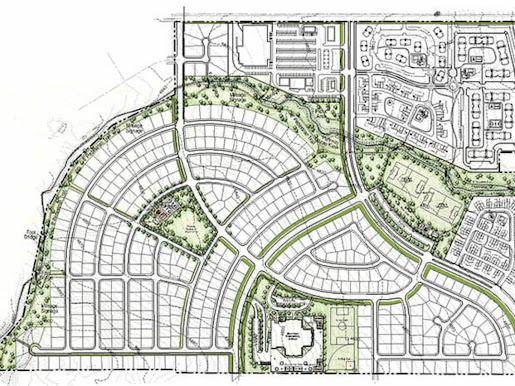Town planning has gained a lot of importance today. New towns are being developed. It has become very important for the town planners to concentrate on old development as well as the new development. It is essential that old and new development are linked properly. Energy efficiency in planning should be the goal of any town planner, urban designer or an architect. The aims of town planning are as follows.
- To correct the past errors as far as possible.
- To provide civic aesthetics of the town.
- To attempt an orderly appropriate and balanced arrangements of land use.
- To develop healthy, attractive and efficient environment in the city.
- To promote a high level of culture.
- To create and maintain an attractive central core and make it the cultural, financial, commercial and entertainment centre.
- To provide an interrelated balanced transportation system adequate to meet the needs of everyone in the urban community.
- To encourage the attraction, retention and expansion of a sufficient number and variety of industries and business activities to provide jobs to the people and to get more income to municipality.
- To create a sense of dignity, identity, pride and responsibility in the social environment.
- To suggest the schemes which will control the future growth and development of the city.
- To insure against the possible future errors.
- To concentrate for development of full potentials of human resources through wide variety of programmes, facilities and other incentives.
- To establish and maintain a consistent housing policy providing for decent housing open to all persons in the community at reasonable prices and rents.
- To encourage vigorous programmes of inspection, maintenance of health environment in the city.
- Suggestions will be given to provide maximum housing facilities as per the income through various concerned authorities.
- To encourage the development of neighbourhoods as social and recreational units and promote the neighbourhood organizations and involvement in the improvement of local services, facilities, transportation and living conditions.
- Suggestions will be made for efficient transportation facilities in the city including new roads, widening the roads repairing maintenance depending upon the localities and functional zones.
- To develop parks and recreation facilities to optimum standards based on local needs preserving as many sites of natural and historical significance as possible.
- To provide maximum educational and medical facilities.
- To provide maximum utility service facilities to reach all people of the city.
- To promote maximum co-operation between Government and public to get the benefits of development schemes of urban development.
- To implement effective measure of slum clearance programmes in the city and controlling the further development of slum in the city.
- Suggestions will be made to demolish old structures of public and private houses.
- To suggest relocation, redevelopment and renewal of structure in the city.
- To create maximum green and open spaces in the urban limit.
- Measures will be suggested to control the pollution of air, water, noise etc.
- Improvement and modernization of water supply, sewerage, electricity etc.
- Improvement of site development for residential industrial, public and semi-public use.






